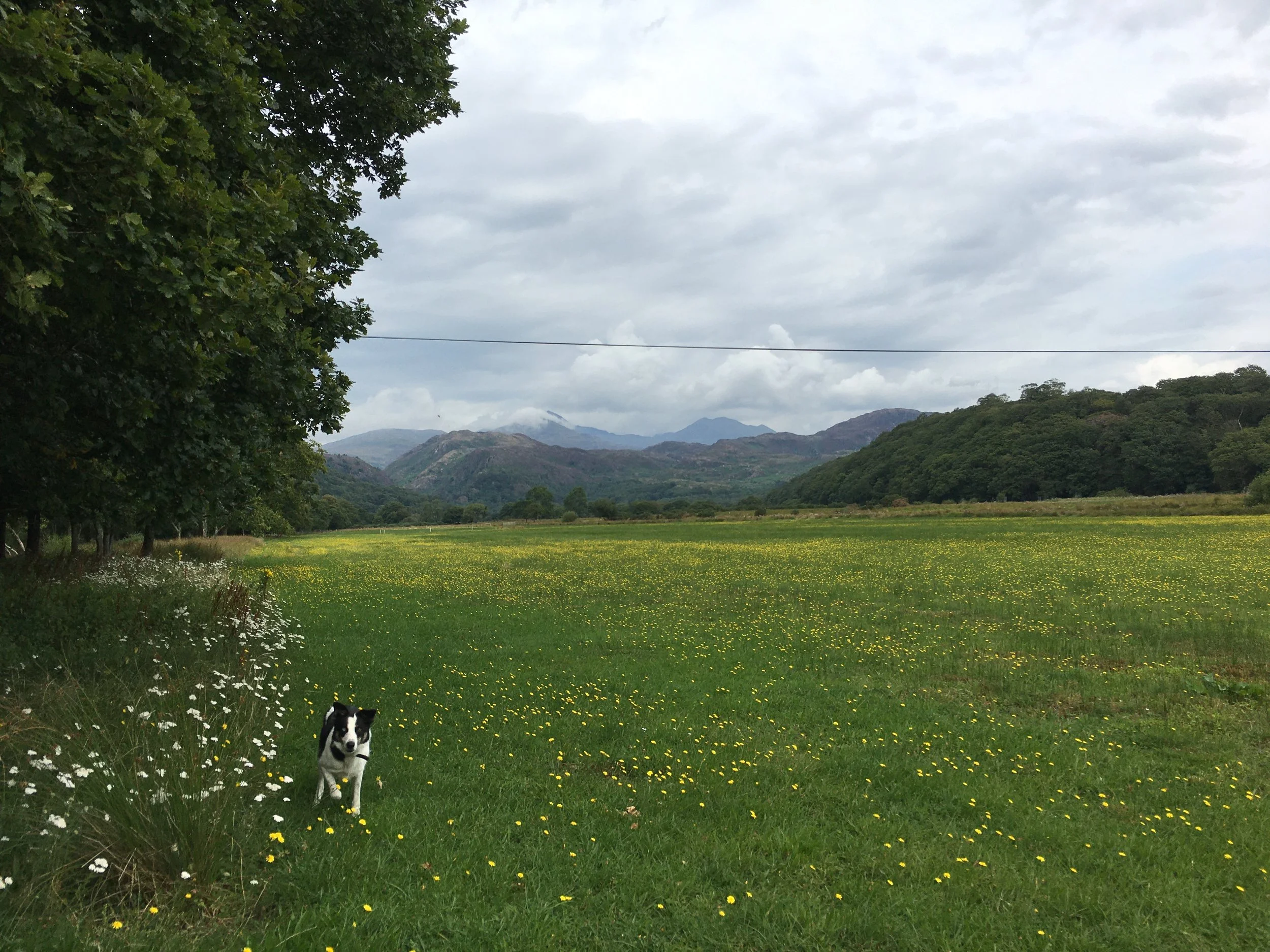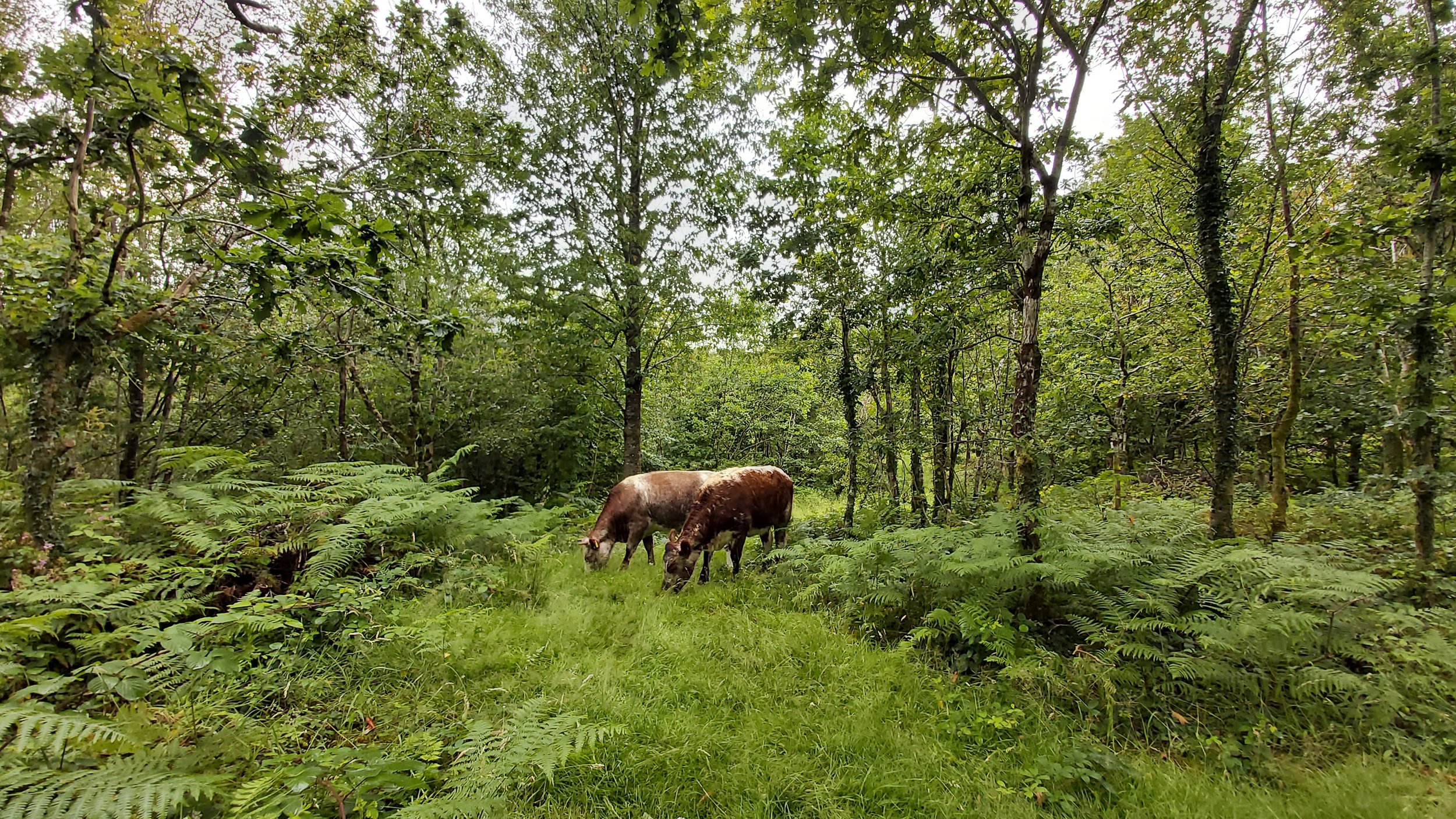
What is the Biodiversity Beef and Lamb ethos?
Enhance Biodiversity
We manage our livestock's grazing times to create diverse pastures and landscapes with lots of flowers and seeds for insects and birds. No artificial fertilizer is applied.
We are improving our soils, leaving long rest periods between grazing and adding organic matter through mob grazing cattle onto long grass, reducing compaction and improving drainage where it makes sense to. We have very low chemical usage on our sheep (wormers and anti maggot treatments) so we don’t damage the soil microbes.
We sequester carbon by planting hedgerows and trees, we improve soil organic carbon in our grasslands, and manage our peatlands to protect their carbon store
We ‘conservation graze’ celtic rainforests and heathlands for other land owners or charities to improve their habitats and ecosystem functions (water and mineral cycling)
We remove invasive non native species from our farmland such as himalayan balsalm and rhododendron which smothers natural vegetation
We add new features for wildlife such as ponds, reseed species rich fields,
We do not:
-use artificial fertilisers, use pesticides or plough soils
This is all still very much a journey we are on, we are by no means perfect, and as we are only three years into farming Hafod y Llyn we have a lot still to do!
Produce pasture fed & high welfare meat
Our animals eat what is naturally available to them across the land we rent. They browse on species rich grassland, herbs and woodland pasture. They don't get any feed containing grains, GM produce, nor soya. This also helps our impact nationally and globally by not needing potentially damaging imports from overseas, nor food which could be fed to humans.
Practicing conservation grazing means our cattle get a varied environment with different challenges- from chilling in riverside meadows, finding ivy to browse in woodlands, or exploring in the uplands between peat bogs and heather! They also tend to stay in one big family ‘mob’ together, allowing all the natural dynamics to play out, and providing a good quality of life.
Our sheep and cattle live outdoors all year round.
We are lucky to have an excellent small family abbatoir less than 30 minutes away, which reduces transport time for our animals.
Create nutrient dense produce and engage people in the land
Pasture-fed meat and milk has:
Lower total fat levels
Higher levels of conjugated linoleic acid (CLA)
Higher vitamin and mineral levels than meat or milk from grain-fed animals
Higher levels of Omega-3
The majority of our land would not be suitable for growing crops or vegetables (nor do we have the skills or time for it!), so we are aiming to produce nutritionally dense food from ‘rough land’ whilst regenerating biodiversity.
We run a mixture of events and educational visits for schools, vulnerable children, mountain leaders and other farmers. Both of us are very passionate about how our uplands are managed, respected, and cared for by the local community.





